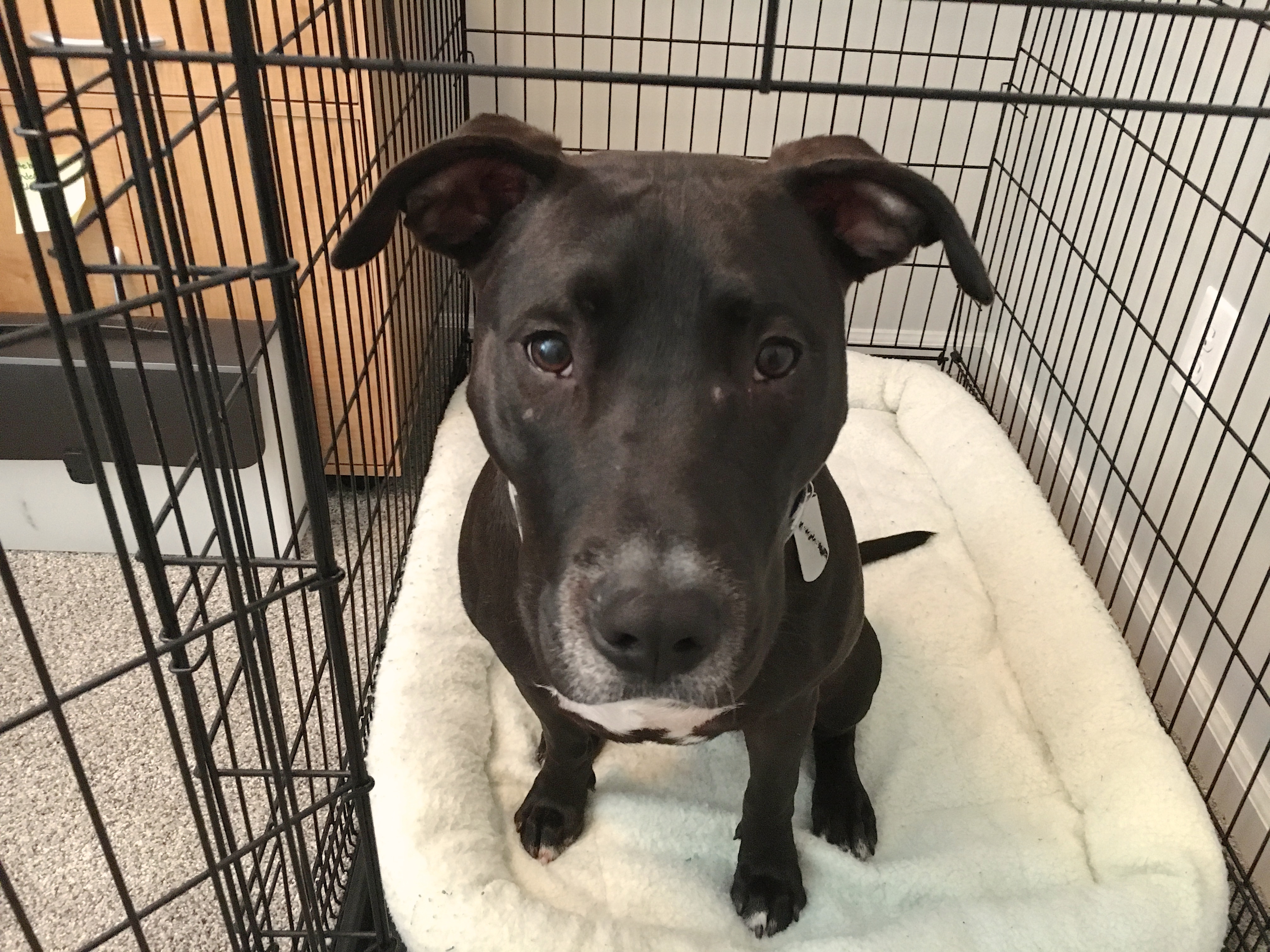Crate Training and Tips to Help a Lab Pit Mix Stop Chasing the Cats
By: David Codr
Published Date: July 17, 2017
Reggie is a one year old Pit Bull / Lab mix who lives in Omaha. His guardians set up a dog behavior training session with us to do some kennel training and get him to stop chasing the cat.
Reggie certainly displayed an excited energy when I arrived for the session. I spotted something his guardian was doing that was actually amplifying his excited behavior and pointed it out in the video below.
Reggie was quite nosy with myself and my bag when I sat down with his guardian to discuss his dog behavior problems and how we could help them. He repeatedly stuck his nose deep into my bad and occasionally into my crotch.
It wasn’t hard to see why he did this, any time Reggie got close to his human, she immediately petted him. While petting a dog is a good thing, anything your dog is doing when you pet it is what you are rewarding. So when the dog invaded her personal space and she petted him, she was training him to invade people’s personal space.
I went over our Petting with a Purpose method to help add a little structure to this repeating activity. If the guardian gets into a habit of petting him with a purpose, it shouldn’t take long before he is respecting people’s personal space by adopting a new way of asking for attention; sitting in front of them.
Another issue we helped his guardian with was Reggie’s fear of the kennel. Many people think they can just put a dog into a kennel without any practice or prep work. This works for some dogs, but for others, failing to teach them the kennel is a good place results in them becoming fearful of the kennel.
To help Reggie get over his fear of the crate, I pulled out some high value treats to start building up a positive association with it.
Training a dog to be calm and to relax in the crate is pretty easy, it just takes time, repetition and lots of tasty dog treats. Following the crate training exercise instructions in the above video should help Reggie learn that going into the crate is a good thing.
Next up was Reggie’s desire to chase after the cats. What the guardian described to me was behavior that I would classify as curious, not aggressive. This behavior usually started as soon as Reggie heard the sound of the baby gate to the cat room being opened.
Any time you have a dog who is reacting to something, its usually done in steps. Each step in the process results in more and more excitement or increasing the intensity of their reaction. If you continue without addressing the change in behavior for each step, you end up with a very excited dog.
To help Reggie stop getting excited, I decided to use a combination of desensitization and counterconditioning to help Reggie stay calm, even when he heard the sound of the baby gate being opened. You can watch this process in the video below.
I was quite pleased at how quickly this approach helped modify dog behavior. Now its important to keep in mind this is just the first step and it will need to be repeated over and over while gradually increasing the intensity of the sound or movement until the dog no longer reacts multiple times in a row.
When we attempted the counterconditioning technique with the cat in the room, Reggie showed a lot of anxiety and a strong desire to investigate the cat. This is a great example of why it will be important to work on the steps that lead up to letting the cat out first, and then start working with the dog able to see the cat, but add in enough distance so that he isn’t an excited dog.
The guardians can put Reggie into a position to succeed by getting him some good exercise, then providing him with a recovery period before working with him this way. Depleting a dog’s excess energy before doing this kind of behavior modification can really help speed up the process.
We finished the session up by filming a roadmap to success segment that covers all the highlights from the session. You can watch this video by clicking below.
Categorized in: Dog Behavior




